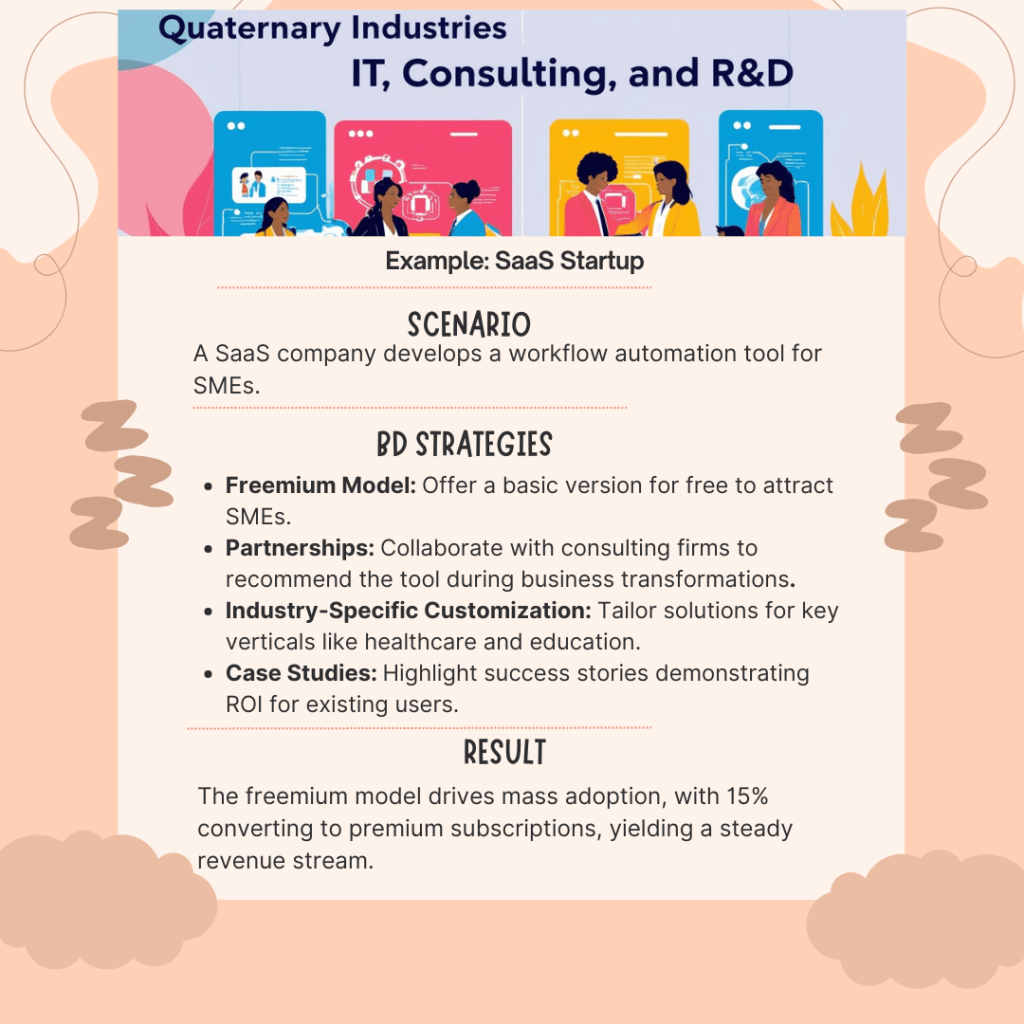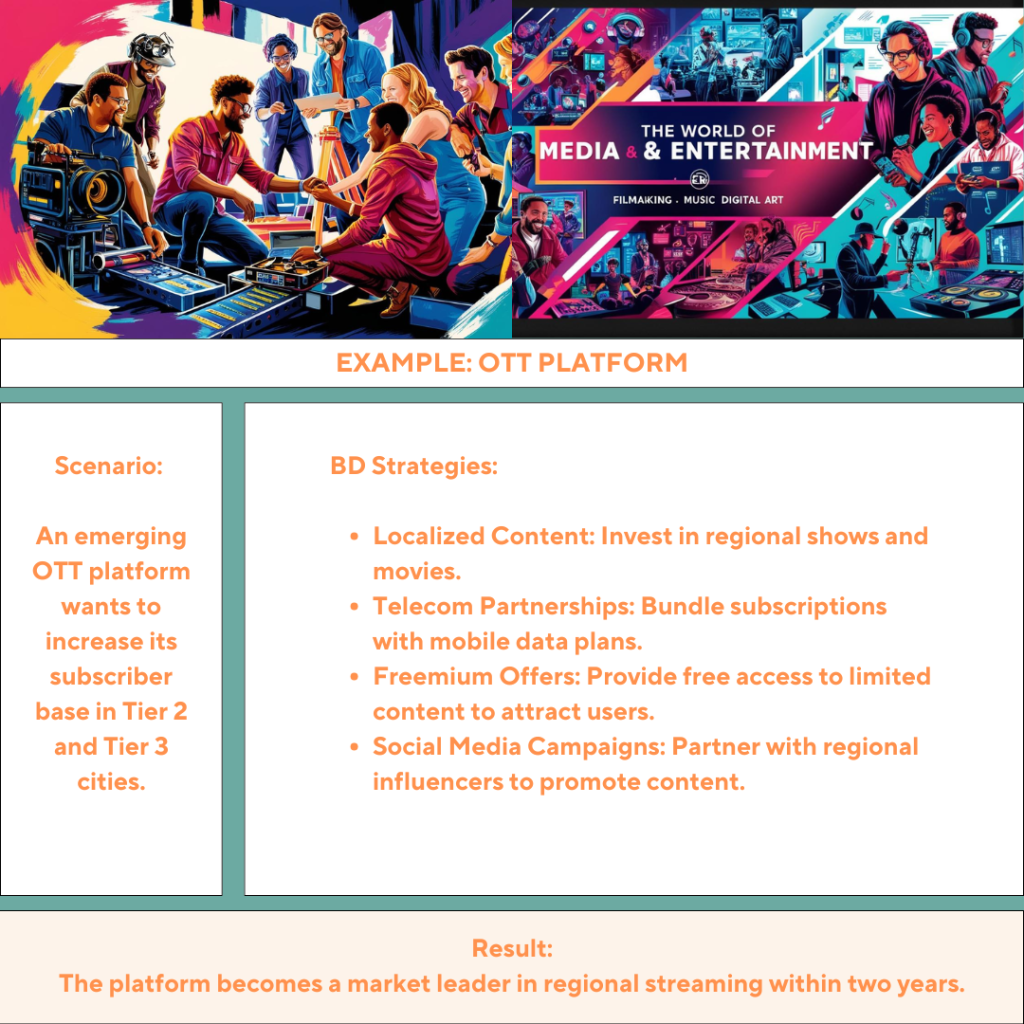
This article builds on the second installment, which explored Part 2 by examining the unique differences and industry-specific adaptations in business development strategies.
In this third and final installment, we will focus on Part 3, diving into:
- In-depth, some helpful examples of business development strategies tailored to specific industries.
- Practical insights and lessons drawn from these examples to inspire actionable strategies.
Through these examples, we aim to bring theoretical concepts to life, demonstrating how businesses across sectors achieve growth through innovative and customized approaches.
Industry-wise detailed examples
Here are detailed examples industry-wise, focusing on actionable strategies and real-world applications for business development (BD). Each example demonstrates how companies can tailor BD strategies to align with the unique characteristics of their industry.
1. Primary Industries (Agriculture, Mining, Forestry)

2. Secondary Industries (Manufacturing, Construction)

3. Tertiary Industries (Retail, Healthcare, Hospitality)

4. Quaternary Industries (IT, Consulting, R&D)

5. Quinary Industries (Government, Non-Profit, Policy)

6. Emerging Industries (Green Tech, Space, AI)

7. Media and Entertainment

8. Finance and Banking

9. Pharmaceuticals and Healthcare

10. Education and EdTech

Practical Insights and Lessons Drawn from These Examples to Inspire Actionable Strategies
This section will translate real-world examples into valuable takeaways that can guide business leaders and professionals. By analyzing the strategies employed in diverse industries, we’ll uncover the following:
- How to Identify Opportunities: Learn how successful companies recognize and seize market gaps, such as a technology firm identifying a niche for AI-driven solutions or an FMCG brand launching a product aligned with health trends.
- Adapting to Challenges: Discover how businesses overcome obstacles like regulatory changes, economic slowdowns, or competitive pressures by adapting their BD strategies. For instance, how a pharmaceutical company navigates compliance while securing international partnerships.
- Leveraging Strengths: Understand how organizations harness their core competencies to stand out. This might include a luxury brand emphasizing exclusivity and quality or a startup capitalizing on agility to outpace competitors.
- Building Collaborative Networks: Gain insights into how partnerships, alliances, and customer relationships play a pivotal role in BD success, such as a healthcare provider collaborating with insurers to offer integrated solutions.
- Scalability and Sustainability: Explore how businesses ensure their BD strategies are scalable for long-term growth while maintaining sustainable practices.
By the end of this article, readers will not only understand the nuances of industry-specific strategies but also gain actionable insights to apply these lessons in their own business contexts.
The Verdict: A Blend of Universal and Specific
Business development is both universal and industry-specific. While the core principles of strategy, relationship-building, and collaboration apply across sectors, their execution requires industry-specific adaptations.
For entrepreneurs and BD professionals, the key is to master the universal principles and then innovate within the framework to meet the unique demands of their industry. Analyze your market, embrace its intricacies, and craft strategies that combine timeless BD principles with tailored approaches.
Remember: In business development, adaptability is not just a skill; it’s the foundation of success.
Check out more business articles here